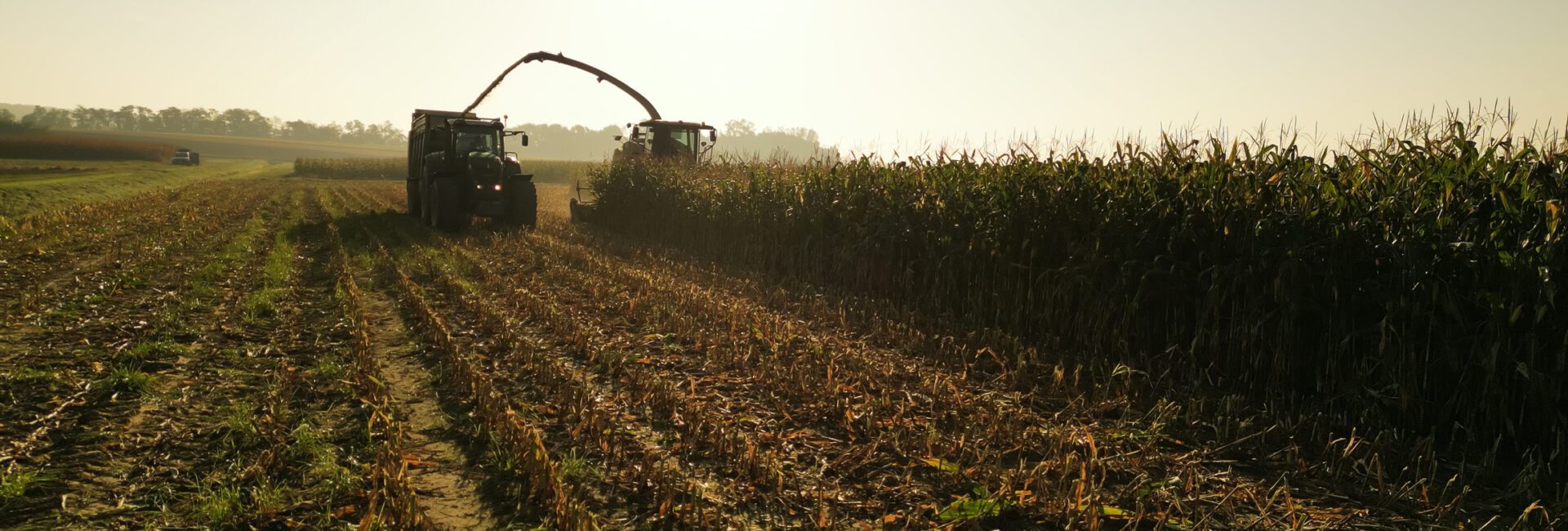By Carolina Vargas, Ph.D., Agricultural Economist and Farm Business Management Advisor for Pinion
As a leader of an agricultural commodity-based business, it is important to understand what the producer of your main feedstock is facing, as the impact to them has a very direct impact on your business.
At the recent Agricultural and Applied Economics Association (AAEA) conference, one message came through loud and clear: agriculture has always been cyclical, with inevitable highs and lows.
The question for farmers today is not if change will come — it’s how to respond strategically to protect profits and build resilience. For ag-based businesses that depend on those farmers, the real question is how these dynamics will influence supply, cost structures, and strategic planning over the coming year.
Geopolitical Uncertainty Reshaping Input and Feedstock Costs
Conflict and instability around the world have disrupted agricultural supply chains and increased input prices. The war between Russia and Ukraine, two major players in urea production, continues to drive fertilizer costs higher. Meanwhile, China has reduced phosphorus exports since late 2024 to meet its own internal demand, tightening global supplies even further.
Just this August, DAP fertilizer prices at the Port of New Orleans hit a record high compared to corn prices, which is a significant signal for both producers and the businesses that rely on them. The only silver lining here is that energy prices have come down a bit.
At the same time, global demand for agricultural commodities has slowed, particularly for raw materials and edible oils. This trend has been especially pronounced for soybeans, largely due to China’s strategic efforts to diversify its import sources. Although there has been a slight uptick recently, with China purchasing three cargoes ahead of President Trump’s visit, the volume remains far below historical levels and does not signal a return to previous export patterns. This decline, coupled with favorable weather conditions in South America, has contributed to falling commodity prices, leaving farmers squeezed between lower revenues and higher input costs.
Trade Tensions
Trade policy uncertainty continues to challenge the ag economy. When tariffs were announced this spring, the U.S. stock market, energy prices, and grain markets all dropped sharply. While markets have since stabilized, volatility remains, making it difficult for farmers and end consumers to time purchases or secure pricing.
Tariffs have also disrupted access to manufacturing materials essential for farm machinery and vehicles. Between 2020 and 2021, material shortages led to an increase in prices, further straining farm budgets.
Equity and Debt Challenges
Debt is another area where things are murky. On the one hand, land values are up. According to USDA’s August 1 report, cropland values rose by $180 per acre over last year, a 4.3% increase, bringing the average to $4,350 per acre. That’s great news for farmers who own their land, because it increases their equity. But for renters, it’s a different story. Cash rent for cropland hit a record high $161 per acre, while pastureland rent stayed flat at $16.
On the other hand, interest rates are still high to help alleviate inflation, loans are more expensive, and interest payments are eating into budgets — all making it unclear how accessible credits are to farmers.
Government Support: Still Unclear
Between the Farm Bill, USDA budget cuts, and other policy shifts, it’s been hard to figure out what kind of support farmers can count on. That said, direct government farm payments are projected to increase significantly in 2025, reaching $42.4 billion — a $33.1 billion jump from 2024 (USDA- Farm Sector Income Forecast).
These payments include federal program funds paid directly to farmers and ranchers. Nevertheless, the October 1 shutdown has created more uncertainty as to when farmers could access these funds. With 67% of Farm Service Agency staff furloughed and over 2,100 USDA Service Centers closed, most local services are suspended, leaving only minimal staff for urgent tasks. Farmers relying on FSA loans for bridge financing face delays, as key programs (like commodity payments, disaster aid, and loan processing) are currently unavailable.
The ongoing government shutdown is also creating uncertainty across the food supply chain, particularly as the USDA has paused its regular data reporting, leaving producers and retailers without key market signals. Compounding this, the halt in SNAP benefits is expected to reduce consumer spending at grocery stores, especially among low-income households. Early signs of strain are already visible, with increased demand at community pantries suggesting that food insecurity is rising, potentially leading to broader declines in retail-level agricultural demand.
Different Farmers, Different Impacts
This uncertainty is playing out differently depending on the type of farm:
Commodity farmers have seen profits steadily decline since 2022, mostly due to falling crop prices and rising input costs. Many government programs seem geared toward them, but the financial pressure is real.
Specialty crop farmers are facing higher input costs but have benefited from increased demand for niche products. Support for sustainable practices, however, remains uncertain.
Livestock, dairy, and poultry farmers had a rough start with bird flu, but things have improved. Lower grain prices and higher demand for meat, plus smaller herd sizes from 2020–2021, have pushed meat prices up and helped margins.
Northern farmers in the Midwest and Northeast could see reduced yields due to a late-summer drought, which followed unusually wet spring and early summer conditions. Dryness set in quickly ahead of harvest, with much of Maine, Missouri, Illinois, Indiana, Michigan, and Ohio now facing moderate to severe drought.
If you are not directly involved as an agricultural crop producer, it can be difficult to really understand the impact of some of the areas discussed above. We all understand what the success of the farmer has on the global economy and certainly the impact agricultural economics has on biofuels success.
Contact a Pinion biofuels business advisor today to discuss strategies for navigating market shifts and protecting your business’ bottom line.






